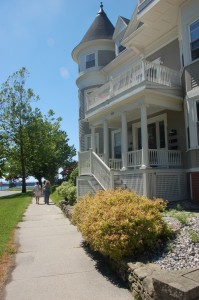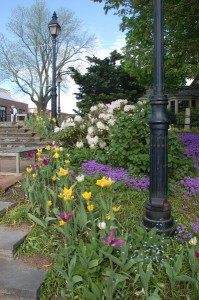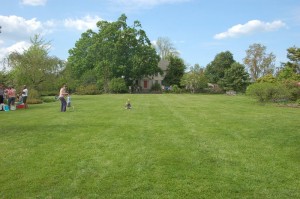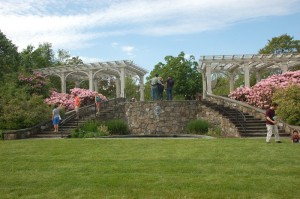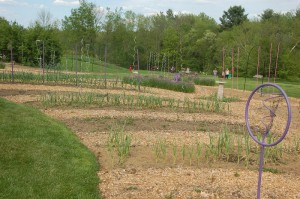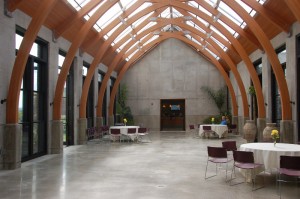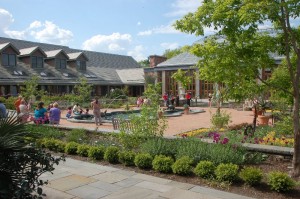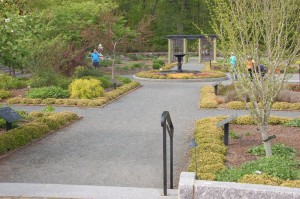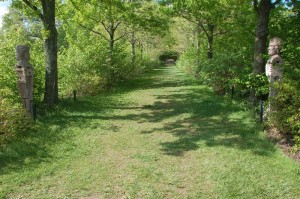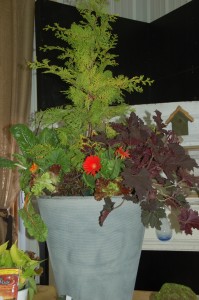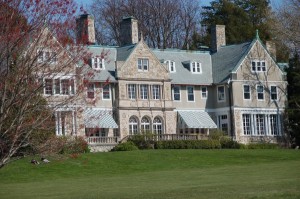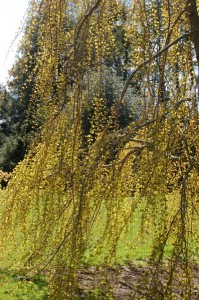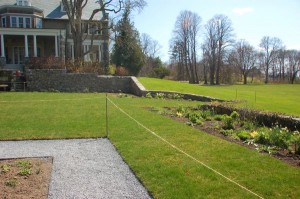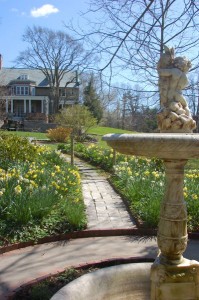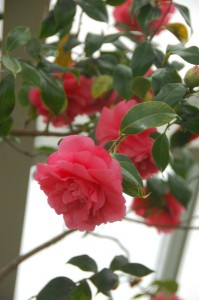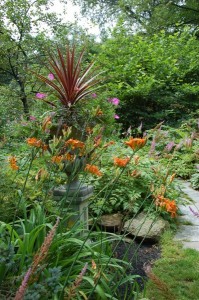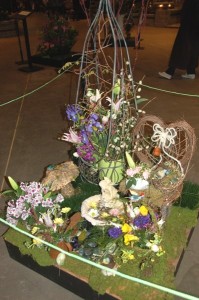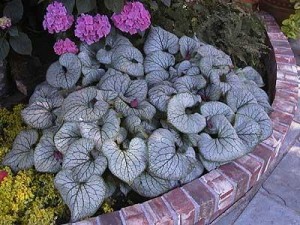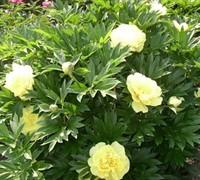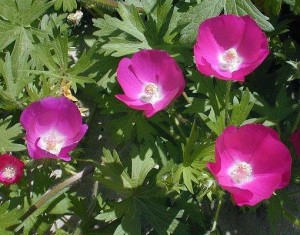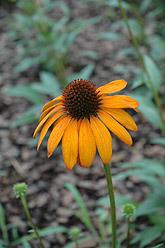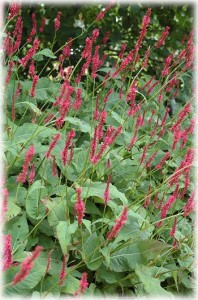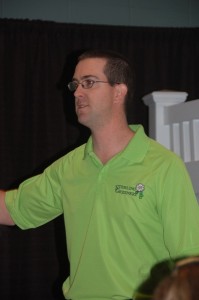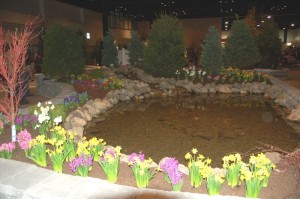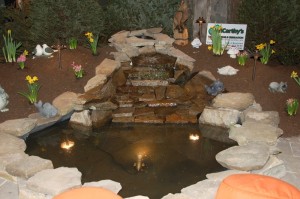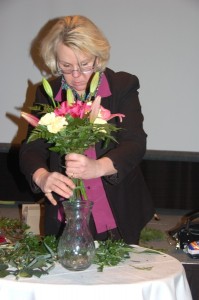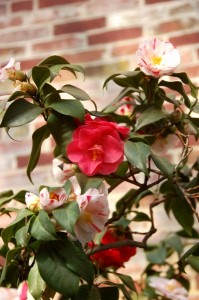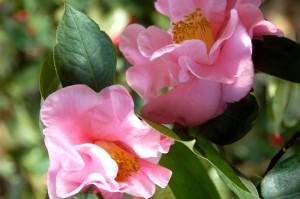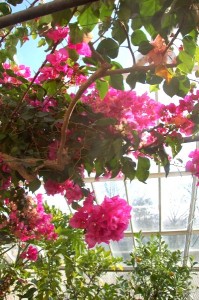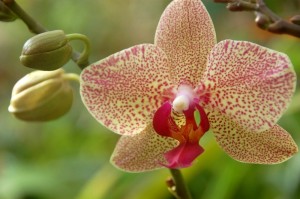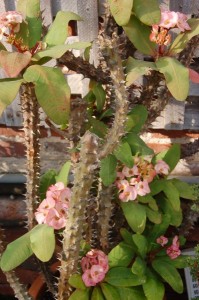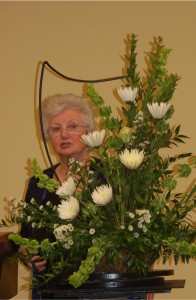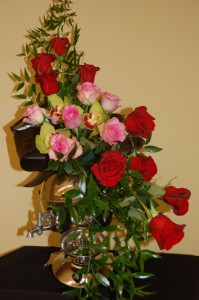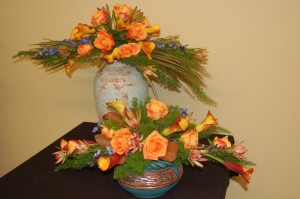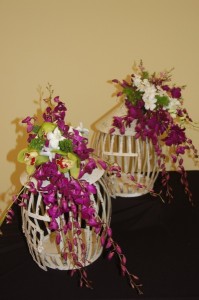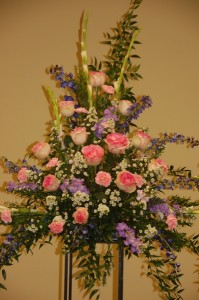 Winslow Tudor’s talk on Saturday, June 9th, about his grandmother provided a gentle, thoughtful introduction to her unique, artistic, and unconventional life. And aptly so. She was a very private person even though she was an accomplished illustrator, primarily of children’s books, widely recognized and respected with numerous awards to her name, such as the Caldecott Honors award and the Regina Medal for her contribution to children’s literature over a lifetime. Her career spanned a remarkable seventy years; she published her last book in 2003 at the age of 88.
Winslow Tudor’s talk on Saturday, June 9th, about his grandmother provided a gentle, thoughtful introduction to her unique, artistic, and unconventional life. And aptly so. She was a very private person even though she was an accomplished illustrator, primarily of children’s books, widely recognized and respected with numerous awards to her name, such as the Caldecott Honors award and the Regina Medal for her contribution to children’s literature over a lifetime. Her career spanned a remarkable seventy years; she published her last book in 2003 at the age of 88.
Winslow presented slides of his grandmother’s home and animals in a thoughtful and understated manner, providing a glimpse of her quiet, deliberate life. As the talk went on so calmly and quietly, it was clear that intrusive questions about her life would not be fitting, but Winslow was open to questions. I would have enjoyed hearing more stories about her, particularly his memories, but that was not forthcoming. He lived next door to his grandmother growing up, whom he saw almost daily. So it’s natural that there may not be outstanding specific memories or that they may be too personal and close to the heart. His life and that of his family were closely woven into the daily routine of her life and perhaps it is not something you can easily extricate into stories for the entertainment of others.
The slide show reflected that in her life “she created beautiful images on paper and in the garden. She drew from life around her,” said Winslow. The change of seasons was very important to her. She would create her art in the winter and then spend the summer in the garden.
She only got electricity around 1976, about four years after moving to her home in Marlboro, Vermont for the comfort of visitors. The only technology in the house was her cordless phone.
Her Garden
Her garden is a few acres with a southern exposure surrounded by a hundred acres of land. When she moved here, the soil was very thin. So every year she built up the soil by adding a few inches of rotting compost to it that she called “black gold.”
Her garden was abundant with all manner of flowering plants, trees, shrubs. Ones that Winslow highlighted in his presentation were:
 Pulmonaria, a perennial lungwort with rosette blossoms that can be reddish to blue, which she loved. She brought it with her from Connecticut, then to New Hampshire, and finally Vermont. It was in her wedding bouquet.
Pulmonaria, a perennial lungwort with rosette blossoms that can be reddish to blue, which she loved. She brought it with her from Connecticut, then to New Hampshire, and finally Vermont. It was in her wedding bouquet. Fritillaria, a bulbous plant with nodding bell shaped flowers that have a disagreeable scent that keeps away voles and chipmunks.
Fritillaria, a bulbous plant with nodding bell shaped flowers that have a disagreeable scent that keeps away voles and chipmunks.- Thirty kinds of daffodils, as well as snow drops, the dwarf iris cristata, and, of course, other spring bulbs such as tulips.
- She loved peonies, pale pink poppies, dahlias, scarlet bee balm, asters (particularly New England purple asters) with foxgloves fringing the garden.
- Sweet rocket was seeded liberally throughout the garden and there was Joe pye weed to attract butterflies.
 She was particularly fond of phlox divaricata, or woodland phlox “Bright Eyes”
She was particularly fond of phlox divaricata, or woodland phlox “Bright Eyes”- She liked plants with daisy-like blossoms such Feverfew, as well as sunflowers, and yellow Jerusalem Artichoke flowers
- Plants would often hybridize to create their own species.
- She didn’t always weed out such things as goldenrod or milkweed because the butterflies like them. Nor did she pull out the mullein plant – tall biennial weed with yellow blossoms that provide shelter for insects in winter and provide food for some birds.
- She planted autumn crocus, or meadow saffron, providing a last burst of purple color before the winter.
- She always had flowers in the house.
Winslow said that she let the garden do what it wanted. But that does not mean that chaos reigned. In spring, she would buy plants and knew exactly where they would go. She said the garden was never done. “So there was an idea of order and design even if in a more wild, romantic way,” Winslow added.
She loved her pets and animals who were the source of inspiration for many of her stories and illustrations. She had a pet bantam rooster she named Chickahominy that she had rescued when its mother deserted the nest. She nurtured it over a double boiler on the stove as a chick and it went everywhere with her.
Tasha Tudor was a very strong, determined, creative, talented individual whose unique upbringing laid the foundation for a life that realized her talents and offered a view of a person who could bring a uniqueness to the world that no one else could. From a very early age, she knew what she wanted to do, but more importantly had she had an uncompromising and committed vision of the life she wanted to create and live fully. Her life was her art and it in turn her art was inspired and fed by it.
Here’s a brief history of her life with information I found in books about her and on the internet.
Her Early Years
It helps that she was born to well-to-do, accomplished, non-conformist parents who encouraged her creativity from birth. She was born in 1915 to Rosamund Tudor, a noted portrait artist, and William Sterling Burgess, a naval architect and renowned yacht designer. They both came from a long line of well-to-do New England families and were friends and acquaintances with 19th century authors such as Emerson, the Alcotts, Thoreau, and Mark Twain. By the time Tasha was born, the wealth was gone, but they were comfortable nonetheless.
When her parents divorced at age nine and her mother went to live in Greenwich Village to pursue her art, Tasha went to live with friends of her parents, namely “Aunt Gwen”, in Redding, Connecticut, who allowed her free reign to explore and enjoy the countryside. She was surrounded by many loving relations and friends. Coming from the reserved, stifled environment in Boston, she felt exhilarated to “run wild in a state of utter relaxation from discipline.” Tudor credits her aunt with fostering her creativity.
She also became interested in theater. She loved to dress up in antique clothing and costumes and put on skits written by Aunt Gwen. Love of dance, nature, and country living held endless fascination for her. Tasha was particularly enthralled with the era of the 1830′s and spent her life incorporating that lifestyle and its ideals into her own life and into those closest to her.
In her teenage years, she went back to live with her mother who had bought a farm in Redding, and saved money from starting a nursery school to buy a cow and chickens. Under her mother’s tutelage and while attending classes at the Museum of Fine Arts in Boston, she developed her art and in her late teens decided to become an illustrator. Although not fond of writing, she wrote stories for children so she would have something to illustrate and created her first story about a farm girl at age nineteen.
Marriage and Start of Her Career
In 1938, she married Thomas Leighton McCready, Jr. who had been raised in New York City, but lived in Redding. Although he was a suburbanite at heart, he supported her dream of farming. He also helped her find a publisher for a book, Pumpkin Moonshine, that she had originally created for her English niece Sylvie Ann as a gift and is the story’s main character. It was rejected by many New York publishers, but finally was accepted by Oxford University Press, which subsequently published several of other her works as well. Pumpkin Moonshine was still in print after more than fifty years.
During the 1940′s, Tudor found time to write and illustrate books to support the family as well as continue with farm duties and raise two children. The family moved to a more rustic locale in Webster, New Hampshire and the royalties from illustrating a 1944 version of Mother Goose helped pay for the home that needed restoration. She had two more children and all were trained to run aspects of the farm without the benefit of running water and electricity. She filled their home with antique furnishings, many inherited, and they lived as one would in the 19th century. Tudor washed clothes by hand, could spin and weave flax, make bread from scratch, make candles, sewed her children’s clothing, and planted a big garden of vegetables and flowers.
The family also kept a vast menagerie of farm animals and pets including cows, geese, ducks, chickens, horses, cats, and her beloved Corgis (something she and Queen Elizabeth have in common!). Her pets were part of family activities such as picnics and figured largely in her books.
Inspiration from Family Life
Tudor also drew pictures of her children in period clothing and they were allowed to play in them afterwards. They felt so much a part of the world of old fairy tales and stories that Tudor shared with them. She illustrated real-life events in her book such as her daughter Bethany’s birthday party in the book Becky’s Birthday, and the family custom of decorating an Easter egg tree in A Time to Keep.
Inspired by her Aunt Gwen, she passed on her love of acting out plays and playing with dolls. She and her children created activities for their dolls such as holding fairs, parties, plays, making miniature Christmas presents, and sending letters and parcels through their own special Sparrow post. The dolls were central characters in her books The Dolls’ Christmas and A is for Annabelle. She also staged elaborate marionette shows with figures that she and her children expertly crafted.
Her unusual lifestyle and artistic expression permeated everything she wrote and illustrated to great acclaim. Notable award winning books include A Tale for Easter and 1 is One, which was named a Caldecott Honor book and teaches children to count.
Her Love of Corgis
Her beloved Corgis, a short-legged Welsh herding dog, also inspired a number of books. Her fascination and love of the breed began with a trip to England with her son Thomas, who bought one of the dogs before attending boarding school. Tudor had the dog shipped to her home and since then she has owned as many as thirteen or fourteen at a time! In 1971, she published Corgiville Fair, which she said was her favorite book. She went on to add sequels, The Great Corgiville Kidnapping and her last book, The Corgiville Christmas in 2003.
She also illustrated other books to great acclaim such Mother Goose (a Caldecott Honor book), The Night Before Christmas, Child’s Garden of Verses, as well as other fairy tales, Christmas stories, biblical verses, and bedtime stories. And she’s also illustrated texts by family members.
Move to Vermont
All of this success allowed her to realize another dream of living in Vermont. In the 1970′s, she bought a lot next door to her son Seth, who built her a home modeled on a 1740 farmhouse that she had admired in Concord, New Hampshire. It ideally captured how life would be in the 1830′s with a weathered farmhouse and outbuildings tucked into the hillside with vines, climbing roses, lilacs and a multitude of other bushes and trees to soften the landscape. It is aptly known as Corgi Cottage to friends and fans. And of course, the yard had grazing goats, doves on the roof ridge, and flocks of chickens squabbling and scratching in the dirt. This period in her fifties, free from marriage (she divorced McCready in 1961) and her children grown, allowed her to realize a height of creative expression in the way that she wanted.
In 1989, she partnered with Mrs. David Mathers in the Indiana-based publisher Jenny Wren Press. In her 70′s and 80′s, she continued to be active creatively, running her cottage industry of crafts and illustrations, and giving lectures at libraries, colleges, and museums.
In 1996, the folk center in Williamsburg, Virginia hosted a landmark exhibition of her life and work including her paintings as well as clothing, furniture, dolls, toys, and kitchen implements to great acclaim.
On June 18, 2008, she died in Marlboro, Vermont at age 92.
Tasha Tudor illustrated more than a hundred books, fourteen of which she both wrote and illustrated. Over her lifetime, she received many awards and honors including Caldecott Honors for Mother Goose in 1945 and 1 is for One in 1957. In 1971, she received the Regina Medal for her contributions to children’s literature. But more than this, she created a lasting legacy of a rich, artistic, disciplined, but simple life from which others can continue to draw inspiration especially in the times we live in that are so topsy-turvy, complicated, and full of constant change that is sometimes overwhelming.
The woman’s life was a work of art and was a true reflection of all she believed in and held dear. She drew inspiration for her art from her life and her life was fed and nourished by her artistic passion. Her self-actualized life, which few in this world attain, required an unflinching vision and an indomitable spirit. She was true to herself to the core.
Books About Tasha Tudor, Her Life and Art
To learn more about Tasha Tudor, I read these books, which I highly recommend if you are interested in learning more about this remarkable woman. I will complete the summaries in a future blog.
Drawn from New England: Tasha Tudor, A Portrait in Words and Pictures by Bethany Tudor, 1979
The Private World of Tasha Tudor by Tasha Tudor and Richard Brown, 1992
The Tasha Tudor Cookbook: Recipes and Reminiscences from Corgi Cottage, Tasha Tudor, 1993
Tasha Tudor’s Garden, Tovah Martin and Richard Brown, 1994
Tasha Tudor’s Heirloom Crafts by Tovah Martin and Richard Brown, 1995
Tasha Tudor’s Dollhouse : A Lifetime in Miniature, Harry Davis, 1999
The Art of Tasha Tudor by Harry Davis, 2000
Harry Davis is Tasha Tudor’s nephew who studied art and became her business partner in the 1980′s. He provides a more detailed picture of her life from childhood to adulthood, including her marriage to William McCready and her family of four children. This personal background gives the reader a better understanding of not only the spirit at the core of her being, but also the challenges that life brought her and how she met them. As he is an artist also, he gave an insightful overview of her artistic development from her early art education to her career as an illustrator and author. At the same time, he describes her life in the 1940′s that she led with her family, which inspired so many of her works, and then the life after children in the 1960′s and in Vermont from the 1970′s onwards, with her love of her animals, particularly the Corgis, that permeated her later works.
Forever Christmas by Harry Davis, 2000
Although this book was not sanctioned by Tudor because of an acrimonious parting with Harry Davis, it nonetheless offers a view of Christmases celebrated by Tasha Tudor and her family.
Videos
Take Joy – The Magical World of Tasha Tudor [VHS], 1998
Take Peace – A Corgi Cottage Christmas with Tasha Tudor [VHS], 1998
Children’s Books
Of course, you’ll want to read and, better still, share with a child her many books, particularly The Corgiville Fair, her favorite, The Great Corgiville Kidnapping, and Corgiville Christmas. Also, A Time To Keep, Around the Year, A is for Annabelle: A Dolls Alphabet, 1 is One, The Dolls Christmas, and many, many more.
Tasha Tudor Museum
Located: on the second floor of the Jeremiah Beal House, 974 Western Ave, Brattleboro VT 05301.
Regular Hours: May 5, 2012 through October 20, 2012 Wednesday through Saturday 11-4pm Closed Wednesday, July 4th
Admission fee: Adults: $5, Seniors over 65 and Children 6-12: $3, Children 5 and under: Free ~Charter Members and Tasha Tudor Museum Society Members: Free (Upon presenting your Membership card.) New England Museum Association (NEMA) Members: Free admission with NEMA membership card or Institutional confirmation email.
Directions: From I-91 North or South take Exit 2. Drive west on Route 9/Western Avenue for 1.1 miles until you see the sign for the Jeremiah Beal House on the left hand side. It is one of only two old brick buildings in the area. The Baptist Church is the other and it is across the street. If you see the 7-11, you’ve just passed the Museum.
Websites
www.TashaTudorMuseum.org
www.TashaTudorandFamily.com
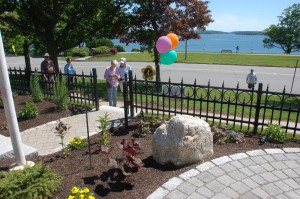 The organizers of the Munjoy Hill garden tour couldn’t have wished for a more perfect day – clear skies and comfortable temps with a nice breeze – for taking in the eleven gardens on this tour.
The organizers of the Munjoy Hill garden tour couldn’t have wished for a more perfect day – clear skies and comfortable temps with a nice breeze – for taking in the eleven gardens on this tour. The Eastern Promenade, which follows the shoreline, was designed by the Olmstead Brothers. It offers views of two lighthouses, a small power plant (okay, maybe not a desirable view!), and Fort Gorges battlement. It offers something for everyone including trails for walking, cycling, or running, public gardens, ball fields, playgrounds, a boat launch, and a beach. There’s also a museum featuring steam and diesel tourist trains along the Casco Bay shore.
The Eastern Promenade, which follows the shoreline, was designed by the Olmstead Brothers. It offers views of two lighthouses, a small power plant (okay, maybe not a desirable view!), and Fort Gorges battlement. It offers something for everyone including trails for walking, cycling, or running, public gardens, ball fields, playgrounds, a boat launch, and a beach. There’s also a museum featuring steam and diesel tourist trains along the Casco Bay shore.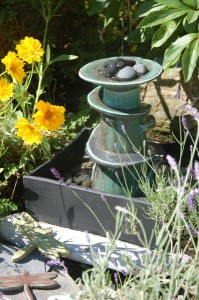 Garden #1 on Morning Street featured a variety of vegetables and herbs in raised beds with trellises, bordered by perennials. It truly made the most of every square inch along with a sitting area on the deck to enjoy an ocean view and scents from the garden. Interesting stone fountains sprinkled throughout the garden provided added interest throughout.
Garden #1 on Morning Street featured a variety of vegetables and herbs in raised beds with trellises, bordered by perennials. It truly made the most of every square inch along with a sitting area on the deck to enjoy an ocean view and scents from the garden. Interesting stone fountains sprinkled throughout the garden provided added interest throughout.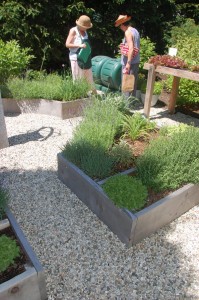 Garden #2 on Eastern Promenade had as its centerpiece a formal raised bed herb garden. It was divided into four curved side sections that formed a circle around an armillary sphere made in England. (Armillary spheres have the earth positioned inside a mesh of bronze hoops, symbolizing the course of the planets as known at the time.) A salad table offered an attractive, easy-on-the-back way to grow greens. An adjacent space was a sitting room area bordered by perennials featuring daylilies from the owners former home.
Garden #2 on Eastern Promenade had as its centerpiece a formal raised bed herb garden. It was divided into four curved side sections that formed a circle around an armillary sphere made in England. (Armillary spheres have the earth positioned inside a mesh of bronze hoops, symbolizing the course of the planets as known at the time.) A salad table offered an attractive, easy-on-the-back way to grow greens. An adjacent space was a sitting room area bordered by perennials featuring daylilies from the owners former home.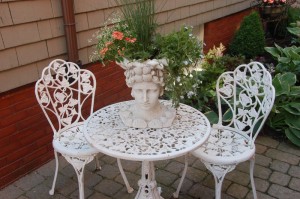 Garden #3 on Eastern Promenade you were greeted by a Roman-like statuary stone planter overflowing with plants on a white wrought iron table. A border of hostas and other perennials led you to the back where a lovely teak wood patio set was backed by a low stone wall bed filled with a variety of perennials and shrubs, such as mountain laurel, hydrangeas, a Chinese dogwood, roses, peonies, and clematis. A stone bench with a colorful mosaic decorating the seat added an interesting focal point to the array of plants.
Garden #3 on Eastern Promenade you were greeted by a Roman-like statuary stone planter overflowing with plants on a white wrought iron table. A border of hostas and other perennials led you to the back where a lovely teak wood patio set was backed by a low stone wall bed filled with a variety of perennials and shrubs, such as mountain laurel, hydrangeas, a Chinese dogwood, roses, peonies, and clematis. A stone bench with a colorful mosaic decorating the seat added an interesting focal point to the array of plants.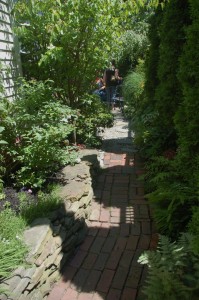 Garden #7 on Melbourne Street the front gate opened to a path lined with evergreens, such as holly and pieris (also known as andromedas or fetterbushes that bloom in the spring), on one side and a low stone wall bed filled shade-loving perennials opposite. This led you to the back with a sunny garden of viburnum, dogwood, crabapple, peonies, hydrangea, and perennials that offer color from spring through winter. The driftwood sculpture of a seagull on the wooden fence added visual interest.
Garden #7 on Melbourne Street the front gate opened to a path lined with evergreens, such as holly and pieris (also known as andromedas or fetterbushes that bloom in the spring), on one side and a low stone wall bed filled shade-loving perennials opposite. This led you to the back with a sunny garden of viburnum, dogwood, crabapple, peonies, hydrangea, and perennials that offer color from spring through winter. The driftwood sculpture of a seagull on the wooden fence added visual interest. While these stood out for me, the truth is each garden caught my interest in some way. Garden #6 on Waterville Street is one to keep an eye on for future tours as it was installed only last summer. The owners are creating an organic garden of fruits and vegetables alongside perennial beds of flowering plants and shrubs that attract hummingbirds and bees.
While these stood out for me, the truth is each garden caught my interest in some way. Garden #6 on Waterville Street is one to keep an eye on for future tours as it was installed only last summer. The owners are creating an organic garden of fruits and vegetables alongside perennial beds of flowering plants and shrubs that attract hummingbirds and bees.
